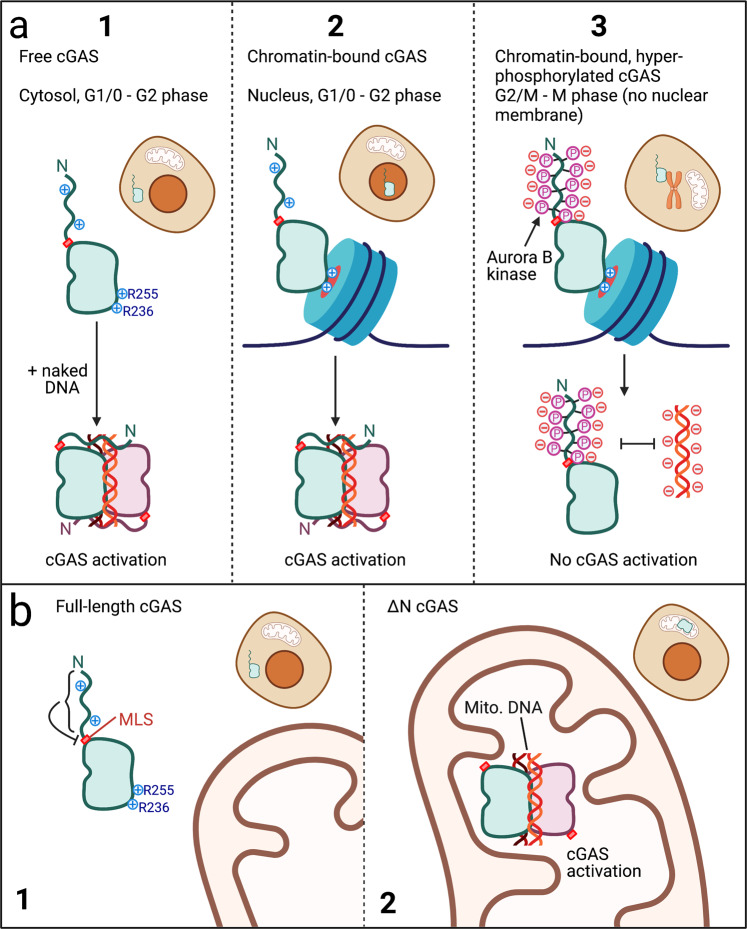Fig. 1. The many faces of cGAS.
a (1) cGAS was initially discovered as a cytosolic DNA receptor that can be activated by dsDNA >40 bp in a sequence-independent manner. Li et al. demonstrate that cytosolic cGAS is neither chromatin-bound nor hyperphosphorylated at its N-terminus. (2) Subsequent studies demonstrated that cGAS was present in the nucleus and tethered to chromatin to prevent activation with genomic DNA. Li et al. corroborate the R236/R255-mediated binding demonstrated in Volkman et al. and provide evidence that this form of cGAS also has a non-phosphorylated N-terminus and can be activated by exogenous/naked (non-chromatin bound) DNA. (3) During mitosis, the barrier between nucleus and cytosol dissolves. Li et al. demonstrate that this form of cGAS is both tethered to chromatin and phosphorylated at the N-terminus by kinases, including Aurora kinase B. Neither chromatin nor naked DNA can activate this form of cGAS. b (1) The N-terminus of full-length cGAS or N-terminal tags, such as 3xFLAG, mask a cryptic mitochondrial localization sequence (MLS) preventing its mitochondrial localization. (2) Removing the N-terminus results in mitochondrial localization and constitutive activation of cGAS by mitochondrial DNA

